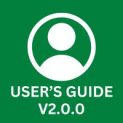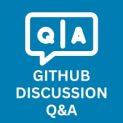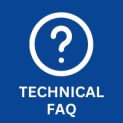
Land Data Assimilation (DA) System
On This Page:
Welcome
The Unified Forecast System (UFS) is a community-based, coupled, comprehensive Earth modeling system. NOAA’s operational model suite for numerical weather prediction (NWP) is quickly transitioning to the UFS from a number of different modeling systems. The UFS enables research, development, and contribution opportunities within the broader Weather Enterprise (including government, industry, and academia). For more information about the UFS, visit the UFS Portal.
Description
The UFS includes multiple applications that support different forecast durations and spatial domains. The standard UFS Land Data Assimilation (DA) System configuration is based on the Noah Multi-Physics (Noah-MP) land surface model (LSM) used in the UFS Weather Model (WM). The provided sample case uses a coupled configuration with the Noah-MP land component, the data atmosphere (DATM) component, and GSWP3 atmospheric forcing data. The Land DA framework uses the Joint Effort for Data assimilation Integration (JEDI) system, which includes the Object-Oriented Prediction System (OOPS) for the data assimilation algorithm, the Interface for Observation Data Access (IODA) for observation formatting and processing, and the Unified Forward Operator (UFO) for comparing model forecasts and observations.
The coupled Noah-MP/DATM Land DA configuration for the v2.0.0 release runs with the GSWP3 atmospheric forcing files introduced through the Community Data Models for Earth Prediction Systems (CDEPS). Key state variables simulated by the UFS WM Noah-MP component model include soil moisture (both liquid and frozen), soil temperature, skin temperature, snow depth, snow water equivalent (SWE), snow density, canopy water content, and the energy flux and water flux terms of the surface energy balance and surface water balance. The JEDI data assimilation framework applies the Local Ensemble Transform Kalman filter (LETKF) algorithm with pseudo-ensemble error covariance.
For any publications based on work with the UFS Land DA System, please include a citation to the DOI below:
UFS Development Team. (2024, October 30). Unified Forecast System (UFS) Land Data Assimilation (DA) System (Version v2.0.0). Zenodo. https://doi.org/10.5281/zenodo.13909475
Getting Started
Before running the Land DA System, users should determine which of the four levels of support is applicable to their system. Generally, Level 1 & 2 systems are restricted to those with access through NOAA and its affiliates. These systems are named (e.g., Hera, Orion). However, most users can take advantage of containers to operate Land DA on any system.
The Land DA workflow described in the v2.0.0 User’s Guide is an excellent place for new users on Level 1 systems to begin. It provides details on how to clone the Land DA System, build it, and run a forecast on Hera, Orion, or Hercules. The Containerized Land DA Workflow chapter is the best place for users on other systems to start. It walks users through running the Land DA workflow via a Singularity/Apptainer container on non-Level 1 systems.
Documentation & User Support
The Land DA User’s Guide has the most comprehensive information on the Land DA System. Users may need different versions of the User’s Guide depending on their goals:
Version
Description
Documentation for the head of the develop branch. This may have gaps and errors.
Documentation for the most recent release (v2.0.0).
Documentation for the v1.2.0 release.
Documentation for the v1.1.0 release.
Users can also get expert help through the GitHub Discussions Q&A.
Developer Support
The Land DA Developer Information page provides information on the Land DA hierarchical repository structure, developer support, and testing.
Releases
The latest release of the Land DA System is v2.0.0. See the Releases page for more information on current and past releases.
Release Date: October 30, 2024
Release Description: The Land DA System v2.0.0 features a coupled configuration that combines the UFS WM Noah-MP land component with the data atmosphere (DATM) component and Joint Effort for Data assimilation Integration (JEDI) DA capabilities. Key features for this release include an updated workflow that better conforms to NCO Implementation Standards; integration of the Unified Workflow (UW) Tools open-source Python package to perform standard numerical weather prediction (NWP) workflow tasks; and validation of analysis outputs using both the CTest framework and the baseline regression test. Updates for this release include:
- Model configuration: In this release, the Land DA System uses a coupled configuration with the UFS WM Noah-MP land component and the DATM component to run a sample case with GSWP3 atmospheric forcing data. A global C96 model resolution is provided for an analysis experiment time period of January 1-31, 2000. The stand-alone driver option to run the Noah-MP routines directly from the Common Community Physics Package (CCPP) has been removed.
- Workflow update: The workflow was refactored to use a standard set of environment variables, file naming conventions, and directory structures defined in the NCO Implementation Standards in order to simplify and generalize the DA workflow system and to improve the troubleshooting process (see the workflow directory structure below). A structured, YAML-based Rocoto workflow management configuration approach was applied using uwtools to produce the Rocoto workflow XML file that manages a set of land DA cycling tasks, computational resources on a batch system, and computational job dependencies. Analysis output for the workflow end-to-end test can be validated with both the CTest framework and a baseline regression test that runs the Land DA workflow end-to-end. The post-processing task produces multiple plots, including histogram and scatter plots for the analysis task and restart plots for the forecast task.
- RDHPCS Platform deployment and container support:
- Tier-1 platforms: Hera, Orion, and Hercules (nightly Jenkins run for CTest on these platforms)
- Singularity/Apptainer containers: Updates to the Singularity/Apptainer container (ubuntu22.04-intel-landda-release-public-v2.0.0.img) support the changes described above.
- Observation database update: The Global Historical Climatology Network (GHCN) daily snow depth observation data have been processed with the JEDI IODA converter for January 1-31, 2000. The IODA-processed data is accessible via the Land DA data bucket.
- Library and JEDI version update: The Joint Effort for Data assimilation Integration (JEDI) system is used to assimilate the GHCN snow depth observation data via the Local Ensemble Transform Kalman Filter (LETKF) algorithm. The required libraries and JEDI-bundle have been updated to spack-stack v1.6.0 and JEDI Skylab v7.0.
- Documentation: The v2.0.0 User’s Guide has been updated to reflect these improvements to the Land DA System.
Known Issues:
- The UFS-WM Noah-MP component can be configured to run in two-way coupled mode to the active FV3 atmosphere model through the Community Mediator for Earth Prediction Systems (CMEPS). An effort is underway to set an analysis baseline test case for the coupled FV3 and Noah-MP configuration.
Documentation:
Release Date: 12/11/2023
Release Description: The Land Data Assimilation (DA) System combines the Noah-MP land surface model with data assimilation capabilities into a user-friendly workflow. The Land DA workflow code base is charting a path forward to unify the Noah-MP forecast model with the UFS Weather Model (WM). Updates for this release include:
- Integration of the UFS Noah-MP land component into the Land DA System for use as an alternative to the Common Community Physics Package (CCPP) Noah-MP LSM land driver. The coupling layer of the land component is developed using the Earth System Modeling Framework (ESMF) and the National Unified Operational Prediction Capability (NUOPC) interoperability layer.
- Updates to model forcing options for use of the UFS land component
- Provided a new analysis option in the cubed-sphere native grid using GSWP3 forcing
- Established global land grid-point consistency with the head of the UFS WM baseline test cases
- Added a new sample configuration file (settings_DA_cycle_gswp3)
- Included an additional ECMWF ERA5 reanalysis forcing option in the existing vector-to-tile conversion analysis process
- CTest suite upgrades—the ERA5 CTests now test the operability of seven major components of Land DA: vector2tile, create_ens, letkfoi_snowda, apply_jediincr, tile2vector, land_driver, and ufs_datm_land
- Upgrade of the JEDI DA system to JEDI Skylab v4.0
- Updates to sample datasets for the release (see the Land DA data bucket)
- Singularity container (ubuntu20.04-intel-landda-release-public-v1.2.0.img) updates to support the changes described above
- Documentation updates to reflect the changes for this release
Known Issues:
- For the GSWP3 forcing option, an artificial GHCN snow depth observation file is provided for a single-cycle analysis test for 2000-01-03. The GHCN observation database will be extended in the near future.
Documentation:
Release Date: 05/25/2023
Release Description: The Land Data Assimilation (DA) System combines the Noah-MP land surface model with data assimilation capabilities into a user-friendly workflow. The Land DA workflow code base is charting a path forward to unify the Noah-MP forecast model with the UFS Weather Model (WM). Updates for this release include the migration of the Land DA System to the ufs-community GitHub space, the addition of a UFS WM build option, modulefile updates to use the spack-stack Unified Environment on Level 1 systems, and DA upgrades to utilize JEDI’s Skylab v3.0 release of jedi-bundle.
Known Issues:
- The GitHub Actions workflow YAML for the Docker-based build and CTest was turned off due to the limited disk space provided in the GitHub Actions free runner.
Documentation:
Land Data Assimilation (DA) System User’s Guide
Other Links
- The spack-stack repository contains the prerequisite software needed to run the Land DA System and other UFS software. This software is preinstalled on Level 1 systems (e.g., Hera, Orion). Users can view the spack-stack documentation to install it on other systems.
- JEDI Documentation (Skylab v4.0): The Land DA System uses JEDI code for DA. The documentation contains information about the JEDI code and how to work with it.
- Land DA System Data Bucket: Get downloadable data to run supported Land DA cases.
- NOAA EPIC Docker Hub: A repository of container images (including Land DA container images) that users can download. Land DA containers package the Land DA System together with all its software dependencies for an easier experience building and running Land DA.
- UFS Land DA System README.md file
Get Started with the Land DA System
Resources
Public Release Code
v2.0.0 (latest)
For Developers
Land DA System Repository Structure
Useful Links
spack-stack code and spack-stack documentation
JEDI code and JEDI documentation (Skylab v7.0)








